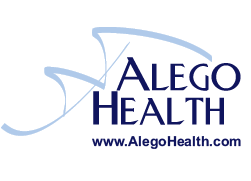19 Jan, 2015 | Rachael Watson | No Comments
Patients’ Online Access to EHRs Doubled in 2014
Patients are becoming more familiar with and are now accessing information in their electronic health records now more than at any other time. In fact, access to this point has nearly doubled, surging from 26 percent in 2011 to 50 percent in 2014, according to results of a study released recently by the National Partnership for Women & Families.
According the research, in the last year, more than four in five patients with online access to their health records (86 percent) used their online records at least once, and more than half (55 percent) used them three or more times a year. The reasons for this might be many, but it’s very likely that familiarity with patient portals and encouragement from their physicians, who are vying for meaningful use dollars, is at play here.
The report, “Engaging Patients and Families: How Consumers Value and Use Health IT,” offers an in-depth look at how patients value and use health IT, such as EHRs, and which functions are important to them. The National Partnership report provides seven strategies to engage patients and families more effectively in their care and was released five years after the Health Information Technology for Economic and Clinical Health (HITECH) Act of 2009 was enacted and the Medicare and Medicaid EHR “Meaningful Use” Incentive Program began.
The survey was collected by asking participants some of the same questions as those that were asked in 2011. According to the National Partnership for Women & Families’ report, the updated data collected identifies trends in patient attitudes, “reflecting progress from the launch of the meaningful use and other federal and state programs to substantial adoption and use of EHRs today.”
Key findings include:
• 80 percent of adults in the United States who have doctors and know what kind of record systems—electronic or paper—their doctors use said that their doctors use EHR systems, up from 64 percent in 2011;
• 85 percent to 96 percent of all patients found EHRs useful in various aspects of care delivery, while only 57 percent to 68 percent saw paper records as useful;
• Consumers want even more robust functionality and features of online access than are available today, including the ability to email providers (56 percent); review treatment plans (56 percent), doctors’ notes (58 percent) and test results (75 percent); schedule appointments (64 percent); and submit medication refill requests (59 percent);
• Patients’ trust in the privacy and security of EHRs has increased since 2011, and patients with online access to their health information have a much higher level of trust in their doctor and medical staff (77 percent) than those with EHRs that don’t include online access (67 percent); and
Different populations prefer and use different health IT functionalities, the study found. For instance, Hispanic adults were significantly more likely than non-Hispanic whites (78 percent vs. 55 percent) to say that having online access to their EHRs increases their desire to do something about their health; and African American adults were among the most likely to say that EHRs are helpful in finding and correcting medical errors and keeping up with medications. So specialized strategies may be necessary to improve health outcomes and reduce disparities in underserved populations.
The poll was conducted online with responses from 2,045 adults who indicated that they have a primary doctor and their doctor keeps medical and health information in electronic or paper format. The survey was conducted between April 22 and May 7, 2014.
The results indicate that healthcare organizations must take their jobs of providing access to patient information to patients seriously, not only because of meaningful use requirements, but because patients want their data. Long thought to be a one of the solutions to engaging patients, it now seems as though portals are bringing patients closer to their doctors and possibly their care.
As the population continues to change and patients become more connected, there’s now little doubt that patients will come to expect access, if not control, portions or all of their data. Those organizations that don’t take advantage of these solutions are going to find themselves left in a lurch, and soon.

Write Reviews
Leave a Comment
No Comments & Reviews